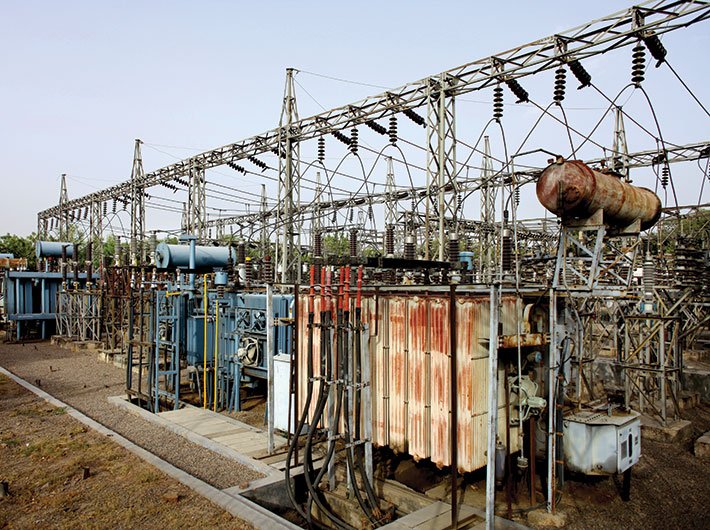Smart grids can help in reducing the accumulated technical and commercial losses, unscheduled outages and peak demand
Under the ambitious smart city mission, cities are scrambling to put together their plans to transform themselves into smart cities. The smart cities programme is a key initiative of the government that aims to make Indian cities more efficient, livable and vibrant and to infuse economic activity in the country.
The smart city plan (SCP) needs to have these two primary components – the area based interventions which are to be limited to a specified area and the pan city interventions that are supposed to be implemented across the city. There are also marks specified for each of these two components for comparing the plans of the 98 shortlisted cities, with area-based interventions being assigned 55 marks and pan-city interventions being assigned 15 marks.
While area-based interventions are being viewed as the template for a larger rollout of smart city interventions, the pan-city interventions are viewed more as the basic interventions that are required across the city to embark on the transformation journey. The pan-city initiative aims to upgrade the existing city-wide infrastructure through application of smart solutions. For improving the infrastructure and services, the smart solutions would involve leveraging technology and disseminating relevant information for helping the users in making well-informed decisions.
Given that energy, and specifically electricity, is a key requirement of a modern energy guzzling city, smart grid is a popular choice of a pan city project. Smart grid helps attain reliable, sustainable and affordable power supply to the citizens. The traditional power systems face various challenges ranging from leakages in the distribution system to gap in the demand and supply to high accumulated technical and commercial (AT&C) losses. In India, the AT&C losses are around 32 percent of the installed generating electricity. Furthermore, the assets are ageing, poorly monitored and have low efficiency. The citizens lack awareness about the role they can play in managing their energy demand efficiently. The municipal bodies face challenges pertaining to distribution management as the demand, especially at the peak hours, outweighs the supply in many places. The utilities require smart solutions for addressing issues related to network reliability, limiting the outage duration and reducing the average cost per kilowatt-hour (kWh).
The smart grid technology can help the utilities in addressing the existing issues. It can help in reducing the AT&C losses, unscheduled outages and peak demand by 50 percent, 100 percent and 27 percent respectively. It can also help in increasing the outage response by 21 percent and improving the customer experience by 70 percent. Smart grid makes use of high-speed communications, sensors and controls to provide an intelligent two-way communication system. The two-way communication system can, in turn, improve the demand side management which, at present, is a major challenge being faced by the Indian power market.
For understanding how the demand-side management technology will help conserving energy and saving costs let us consider a hypothetical case of a typical power demand curve for five days. Essentially, the electricity demand is variable. It is the variability of demand that, at times, makes energy management difficult for utilities. Furthermore, it might be the case that the energy requirement for a city during the day is significantly different from the energy requirements in the night.
In general, the base and intermediate loads (See Power Demand Curve) are taken care of through a contract with power generation agency. However, for the fluctuating peak-demand, the utility relies upon power exchange. The power exchange is costly and might lead to losses due to inability of the utility in estimating the demand of energy. These losses can be reduced if the demand curve flattens, somehow. The production/purchase of electricity has to be fine-tuned with the demand for saving costs and conserving energy to flatten the curve.
This flattening of the curve can take place if the users change their time and amount of energy consumed. Changes in consumption patterns can translate to load shifting and energy efficiency and conservation. Smart grid allows load shifting by tuning the parameters associated with load/demand dynamically. The smart grid technology provides a two-way communication channel between the utility and the households. Using the smart grid, the utility can send the rate of electricity at the time of use and other relevant information to the customers. The utility can also track the energy being used by the households simultaneously.
To complement the grid, smart meters will be installed at the household level. By the year 2021, India envisages installation of 130 million smart meters. Installing the smart meters is important because they equip customers with enough information that the users can monitor their demand and change their consumption patterns according to the fluctuating prices. Generally, the electricity prices rise during peak hours. If the users are able to shift the load to off peak hours, then the costs incurred by them would reduce. Even the utilities could save costs by not generating/buying additional electricity. Using the information provided by the smart meters, the users can make well-informed decisions and shift their consumption pattern. With better flow of information, even the utilities can operate more effectively by introducing cost efficiency measures. The utility can introduce differential pricing while keeping the users well-informed on a real time-basis. The billing and collection efficiency will be improved through these smart grids. Power consumption can also be monitored on a real-time basis and used for testing pilot projects.
On the supply front, smart grid allows integration with alternative sources of energy such as solar, wind, nuclear, hydrocarbon and cleaner technologies. This can help in reducing carbon emissions and ensuring a sustainable source of power supply. For implementing the smart grid, municipal bodies can leverage from the existing government schemes. The government can extend financial assistance for the smart energy management initiative under integrated power development scheme (IPDS), a scheme that envisages bridging the gap in sub transmission & distribution network and metering.
Smart energy management demonstrates one area where the infrastructure and services can be up graded through the technological interventions. The cities can take up solutions related to waste management, urban mobility, e-governance, medicine, education, incubation, public safety and water management. The initiative must be relevant, effective, efficient and sustainable for the city. It should positively impact all the citizens of the city by improving city’s governance or public services or infrastructure.

